
U.S. Postal Service
The U.S. Postal Service (USPS) has been under continuous financial pressure since 2008. Funded exclusively by selling its products and services, it has suffered from a decline in its first‐class mail business, due in part to the rise of electronic mail, especially for billing.
During this period USPS has reduced its workforce considerably, streamlined operations for greater efficiency, and increased its package deliveries. In this way it has managed to achieve an operating profit. However it is still seriously in the red because it has not been able to meet the requirement set by Congress to prefund its future retiree health care benefits.
Congress has attempted several times in the last several years to address the Postal Service’s issues comprehensively. A major bill (S. 1789) passed the Senate in 2012, but got no further.vLegislators and government officials continue to struggle with the problem. Recently, reforms to the Postal Service have been offered by:
- the Department of Treasury’s Postal Task Force in their 2018 report,
- the Postmaster General in her statement to the House of Representatives in 2019,
- the House of Representatives, which passed the USPS Fairness Act (H.R. 2382) in early 2020.
The major issues they have addressed include:
- whether to allow USPS to raise their postal rates,
- whether the Postal Service should be allowed to start up new lines of business, offering non‐postal services and products.
PPC conducted a study in 2015 of these issues and more based on proposals put forward at the time by the Postmaster General, the Inspector General, and bills under consideration in the Senate and House.
National Sample: 714 registered voters
Margin of Error: +/- 3.7%
Fielded: July 2 – August 12, 2015
There were also oversamples of 1,542 respondents from Virginia, Maryland, Maryland’s 7th Congressional District, Oklahoma and Oklahoma’s 4th Congressional District. This data can be found in the questionnaire.
Questionnaire with Frequencies (PDF)
Full Report (PDF)
Proposals with bipartisan support discussed below include:
- Reducing or eliminating the USPS’ retirement pre-funding requirement
- Allowing USPS to offer a wider range of products and services
- Allowing USPS to close a number of their unprofitable offices
- Eliminating Saturday letter delivery
- Mandating or promoting the voluntary conversion of door-delivery mailboxes to curbside or cluster boxes
- Requiring that, in the event of labor disputes, arbitrators take into account the USPS’ long-term financial stability
- Allowing postal rates to rise faster than inflation
|
MAKING THE U.S. POSTAL SERVICE MORE VIABLE |
|
Respondents were introduced to another proposal for reducing costs by closing some unprofitable post offices, as follows: In 2012, there were 31,272 post offices in the United States. The Postmaster General has identified a list of 3,653 post offices that are losing money—about 12% of the total—and has proposed that the Postal Service should be able to close them without Congressional interference. The Postal Service estimates that doing this would save it $200 million a year. Currently there are some in Congress who are opposed to closing these post offices and say that the Postal Service should not be able to make this decision without Congressional involvement. Arguments were presented in favor of the proposal to allow the Postal Service to close unprofitable post offices. These were found convincing by large majorities of 81% and 87%, with small partisan differences. Permit the Postal Service to close most of the post offices that operate at a significant loss. This would be as much as 12% of post offices nationwide. The Postal Service estimates that doing this would save $200 million a year. This was found acceptable (6-10) by 62%, including 67% of Republicans and 60% of Democrats. The Postal Service would be permitted to close no more than five percent of existing unprofitable post offices each year. This was found acceptable by a bare majority of 52%, with minimal partisan differences. At the end of the survey, respondents were asked to choose between the two proposals (a 12 percent and a 5 percent closing rate), or “NOT specify the number of post offices to be closed, but continue to negotiate each closure on a case‐by‐case basis, with members of Congress possibly being involved.” Two‐thirds recommended one of the plans for reducing unprofitable post offices, including 73% of Republicans and 63% of Democrats. Less than a third (30%) supported the more sweeping 12 percent plan, which was more popular among Republicans (38%) than Democrats (22%). Over a third (36%) chose letting USPS close no more than 5 percent of the unprofitable post offices each year, including 35% of Republicans and 41% of Democrats. Related Standard Polls Here are two cases in which a plurality or modest majority have favored doing so:
Here are two cases in which large majorities were opposed:
When respondents were given a list of options for addressing the Postal Service’s problems only a small minority selected the option of permanently closing post offices.
Status of Proposal |
|
Respondents were introduced to a proposal to reduce costs by eliminating Saturday letter delivery, as follows: One option for the Postal Service to reduce its costs is to eliminate delivery of letters and commercial mail on Saturdays. Packages would still be delivered and Post Offices would still be open on Saturdays. They evaluated two pairs of arguments for and against the proposal. The pro arguments were found convincing by large bipartisan majorities of 78% and 77%, with minimal partisan difference. Eliminate Saturday letter delivery, while retaining Saturday delivery of packages, such as mail order medicines, and Priority Mail. Post office hours would not be affected. This change is estimated to eventually save about $2 billion a year. This was found acceptable (6-10) by 72%, with minimal partisan differences. At the very end of the survey, respondents were asked to choose between the following options:
Reducing Saturday delivery was chosen by 67%. The Republican majority (75%) was distinctly higher than the Democratic majority (60%). Related Standard Polls
Status of Proposal |
|
Respondents were introduced to a proposal to reduce USPS costs as follows: Right now, in urban and suburban areas many people receive their mail directly at their door while others receive their mail in curbside mailboxes or neighborhood cluster mailboxes (called cluster boxes). One option that would save money would be to require most customers to put a mailbox on the curb instead, or to get their mail at neighborhood cluster boxes down the street. Exceptions would be made for people who have disabilities. Both pro and con arguments were found convincing, by bipartisan majorities, but the argument in favor did better. The pro argument was found convincing by a rather robust 73% (79% of Republicans,67% of Democrats). The con argument did less well, with 60% finding it convincing with minimal partisan differences. The Postal Service would be required by law to convert 30 million mailboxes--about a quarter of all addresses--from door delivery to curbside mailboxes or cluster boxes over the next ten years. This would mean about 80 percent of all door delivery mail boxes would be changed. This proposal was found acceptable (6-10) by 58%, including 65% of Republicans and 53% of Democrats. The second proposal was: Do not require that people change their mail delivery away from door delivery, but let the local Postal Service managers try to work with people in neighborhoods to make the change to curbside or cluster box delivery on a voluntary basis. This proposal was found acceptable by about half (51%) with no significant partisan differences. It was found at least tolerable (5-10) by 67%, including 66% of Republicans and 65% of Democrats. At the end of the survey, respondents were asked to choose between the following:
A large bipartisan majority of 79% chose one of the two options for mailbox conversion (required 41%, voluntary 38%), This included 82% of Republicans (required 50%, voluntary 32%) and 72% of Democrats (required 33%, voluntary 39%). In 2015, the proposal was included in the Improving Postal Operations, Service, and Transparency Act (S. 2051), sponsored by Sen. Thomas Carper (D) in the 114th Congress, which did not make it out of committee. There is no longer active legislation calling for this change. |
|
Respondents were presented a proposal to increase USPS revenue by allowing postal rates to rise faster than the rate of inflation: In general, the Postal Service can raise rates only at the rate of inflation for most of its mail. You may have seen the price of a stamp for a first class letter go up now and then—most recently it went up to 49 cents for an ounce. But after adjusting for inflation, the price of first class mail has actually stayed quite constant for some decades. Rates for commercial bulk mail have also remained stable after adjusting for inflation. The problem for the Postal Service is that its costs have been going up faster than inflation. Thus, the Postal Service has requested that it be allowed to raise some of its rates faster than inflation when its costs are growing faster than inflation. It has been proposed that Congress enable the Postal Service to raise its prices on the delivery of some classes of mail by more than the rate of inflation. There is a Postal Regulatory Commission (PRC) that would still have to approve each rate increase. The PRC’s members are appointed by the president and approved by the Senate to oversee the Postal Service and ensure that it acts consistent with the public interest. They evaluated two pairs of arguments for and against the proposal. The arguments in favor were found convincing by large majorities of 81% and 69%. The general requirement that rates cannot rise faster than inflation would be phased out over three years. The Postal Service would be allowed to raise a postal rate in step with its costs for that type of mail, even if that would mean rates would rise faster than inflation. The Postal Regulatory Commission would still have to review and approve each rate increase. A majority of 61% rated it acceptable (6-10), including 58% of Republicans and 65% of Democrats. At the end of the survey, respondents were asked to choose between two options:
The proposal to allow postal rates to rise faster than inflation was chosen by 59%, including 56% of Republicans and 60% of Democrats. Status of Proposal The proposal was then put in the 21st Century Postal Service Act of 2012 (S. 1789), sponsored by Sen. Joseph Lieberman (D) in the 112th Congress, which passed the Senate with 47 Democrats and 13 Republicans voting in favor and 4 Democrats and 33 Republicans voting against. It was not taken up by the House. In 2015, the proposal was included in the Improving Postal Operations, Service, and Transparency Act (S. 2051), sponsored by Sen. Thomas Carper (D) in the 114th Congress, which did not make it out of committee. Since then, the proposal was recommended by the Postmaster General in 2019, as well as the Department of Treasury’s Task Force on the US Postal Service in 2018. There is no longer active legislation calling for this change. The proposal is not currently part of any active legislation. |
|
Respondents were introduced to a proposal to potentially reduce costs by requiring that the long-term financial situation of the USPS always be considered by arbitrators handling USPS labor disputes. They were told: Another proposal deals with labor relations. It would change how collective bargaining disputes between the Postal Service and the labor unions that represent postal workers are resolved. Currently, if the Postal Service and a union cannot reach agreement, after a certain period they are both required to present their cases to a federal arbitrator, whose decision is binding. At present, arbitrators make their decisions based on what issues are raised by each side in the dispute, often including the long‐term financial condition of the Postal Service. Arbitrators must weigh all factors raised by either side. This proposal would require the arbitrator to take into account the current and long‐term financial condition of the Postal Service in every case. They evaluated arguments for and against the proposal. Both arguments were found convincing by bipartisan majorities, but the argument in favor did better. The argument in favor was found convincing by 71%, including majorities of both parties. The counter argument was found convincing by a smaller majority of 62%, including three quarters of Democrats and a bare majority of Republicans. At the end of the survey, they were asked to choose between the following options:
A clear majority of 62% recommended requiring that labor dispute arbitrators always take into account the Postal Service’s long‐term financial condition when considering a dispute. Partisan differences were relatively strong. Seventy-three percent of Republicans chose the proposal, while Democrats were divided. The proposal was then in the 21st Century Postal Service Act of 2012 (S. 1789) sponsored by Sen. Joseph Lieberman (D) in the 112th Congress, which passed the Senate with 47 Democrats and 13 Republicans voting in favor and 4 Democrats and 33 Republicans voting against. It was not taken up by the House. In 2015, this proposal was part of the Improving Postal Operations, Service, and Transparency Act (S. 2051), sponsored by Sen. Thomas Carper (D) in the 114th Congress, which did not make it out of committee. The proposal is not currently part of any active legislation. |





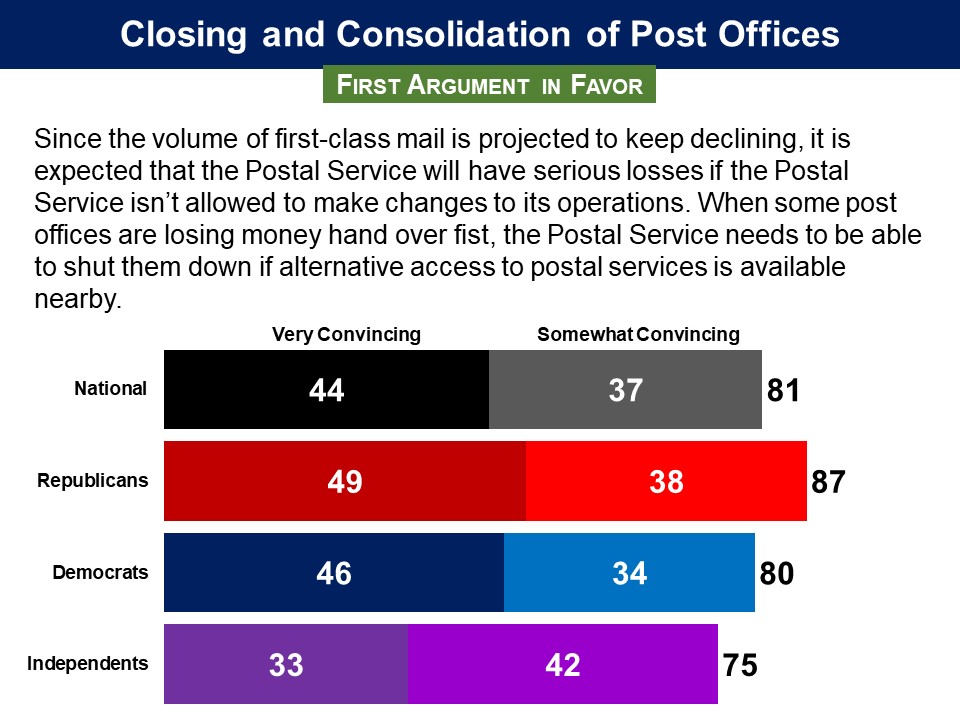
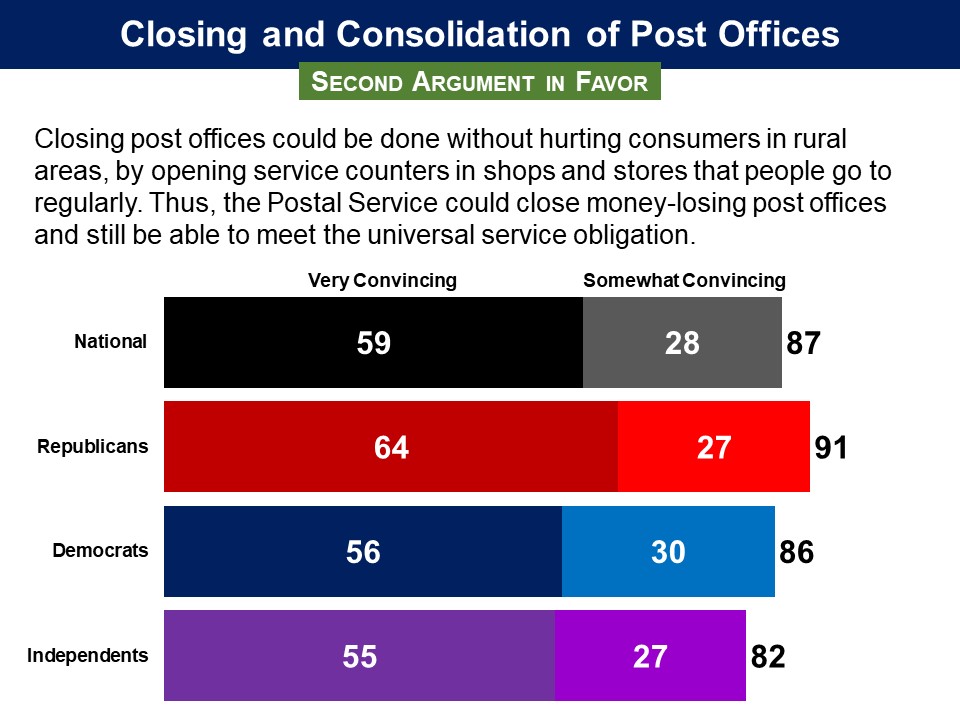 The first con argument was found convincing by an overall majority, including majorities of both parties, but the second con argument was found convincing by only about half (49%), including less than half of Republicans but a clear majority of Democrats.
The first con argument was found convincing by an overall majority, including majorities of both parties, but the second con argument was found convincing by only about half (49%), including less than half of Republicans but a clear majority of Democrats.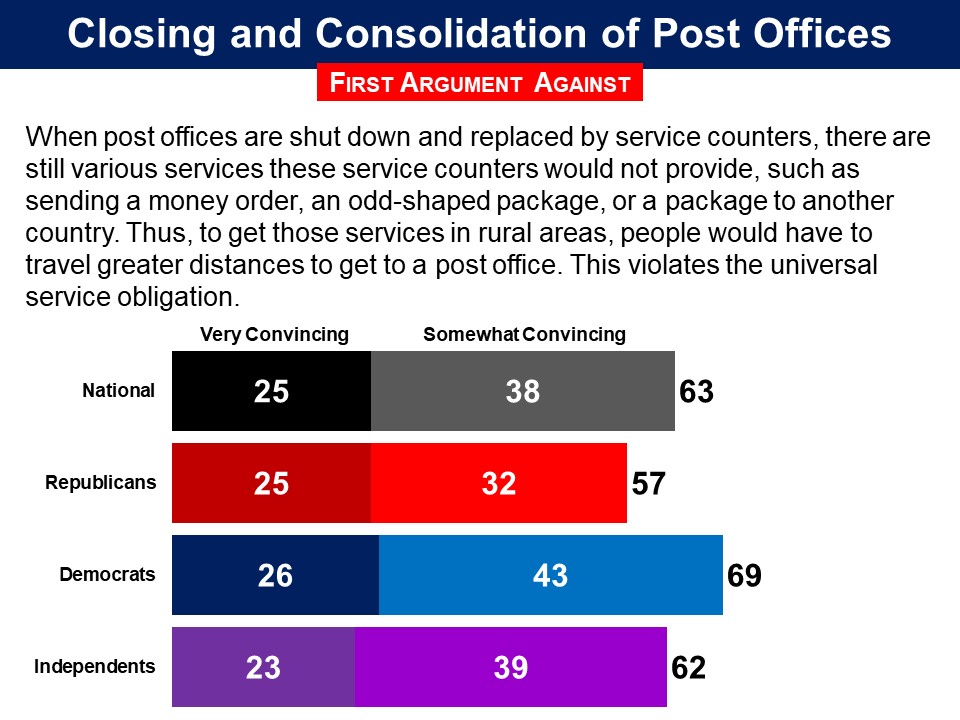
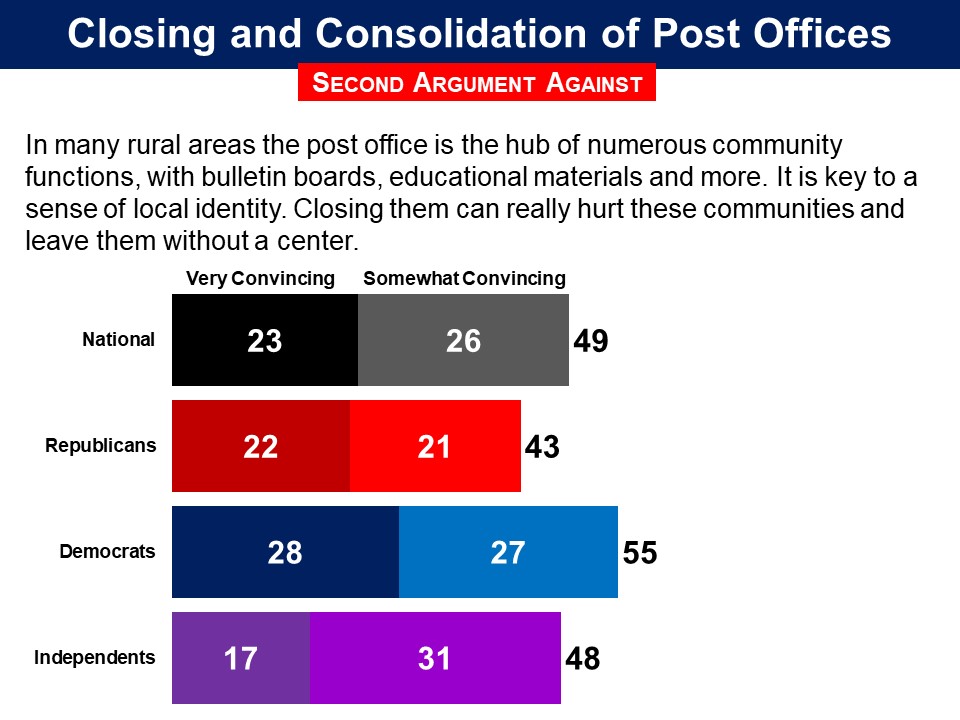 Respondents were then asked how acceptable the following two proposals would be on a 0-10 scale, with 5 being “just tolerable”:
Respondents were then asked how acceptable the following two proposals would be on a 0-10 scale, with 5 being “just tolerable”: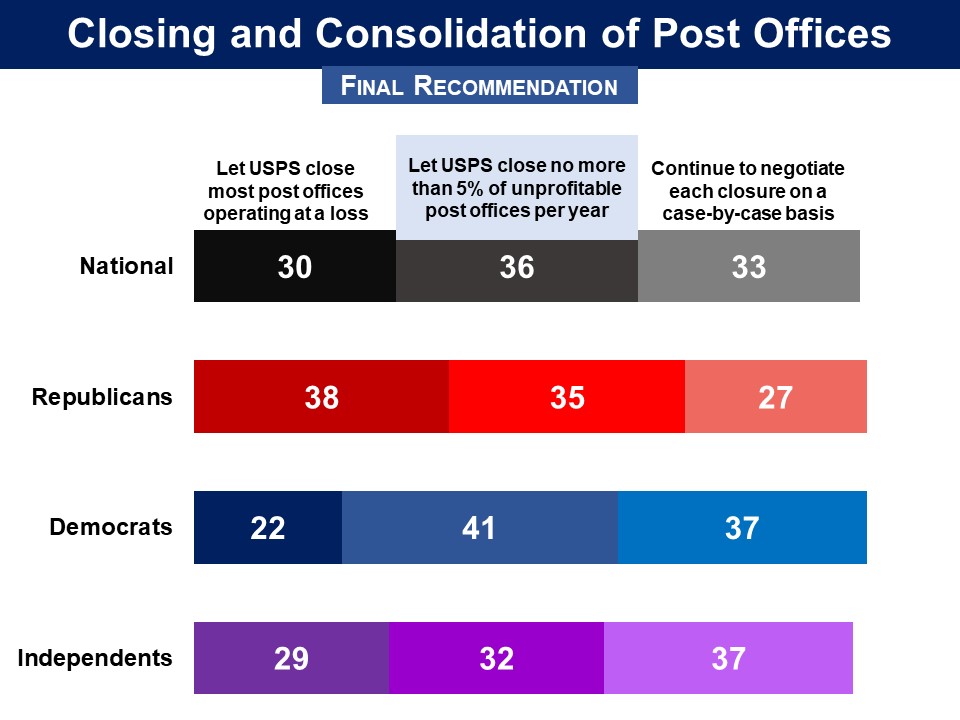 Response Without Undergoing Policymaking Simulation
Response Without Undergoing Policymaking Simulation


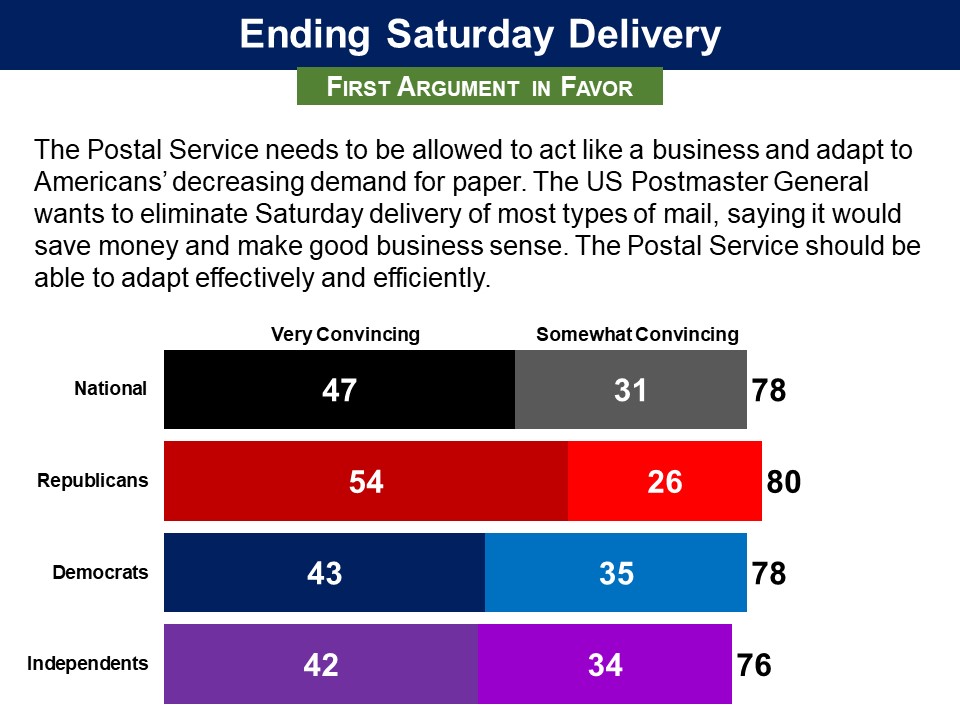
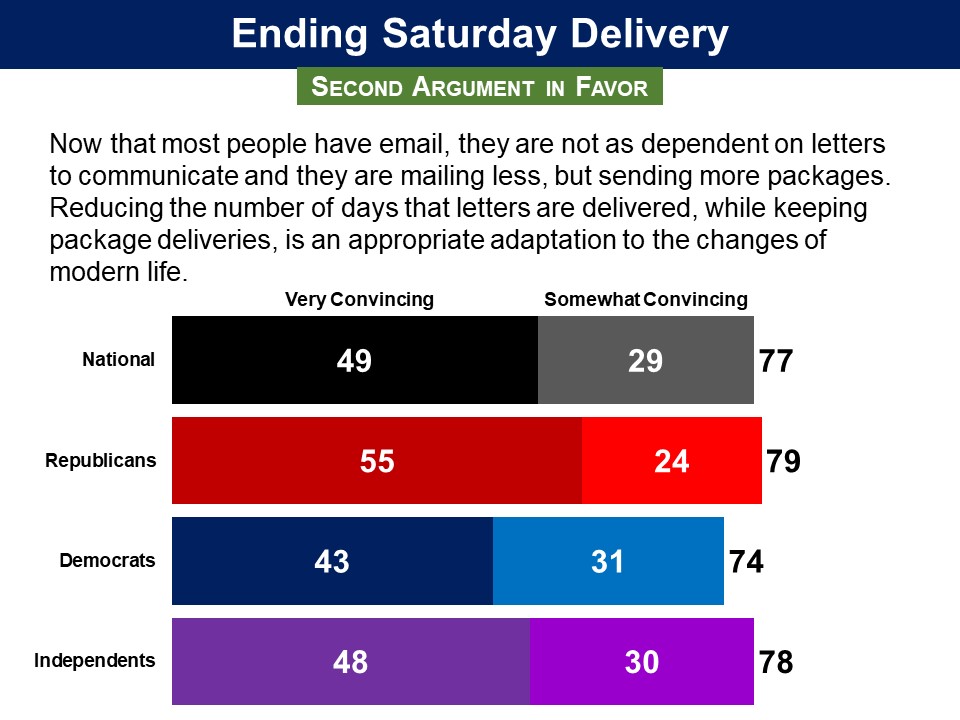 The con arguments were much less persuasive. One was found convincing by less than half (48%). The other was found convincing by a modest majority of 53%. Majorities of Democrats found both convincing.
The con arguments were much less persuasive. One was found convincing by less than half (48%). The other was found convincing by a modest majority of 53%. Majorities of Democrats found both convincing.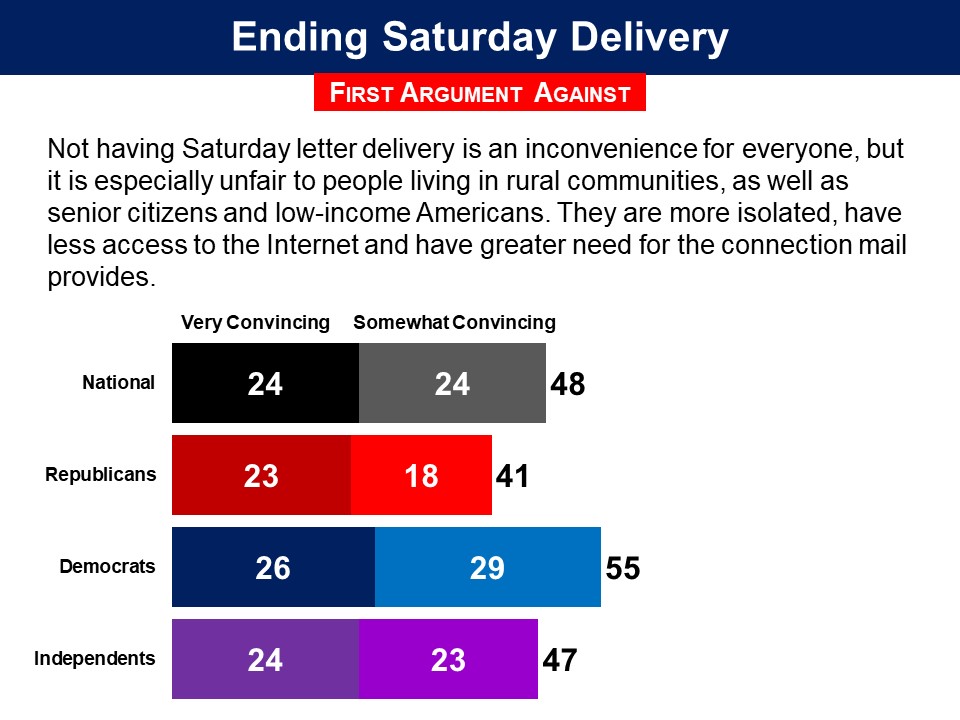
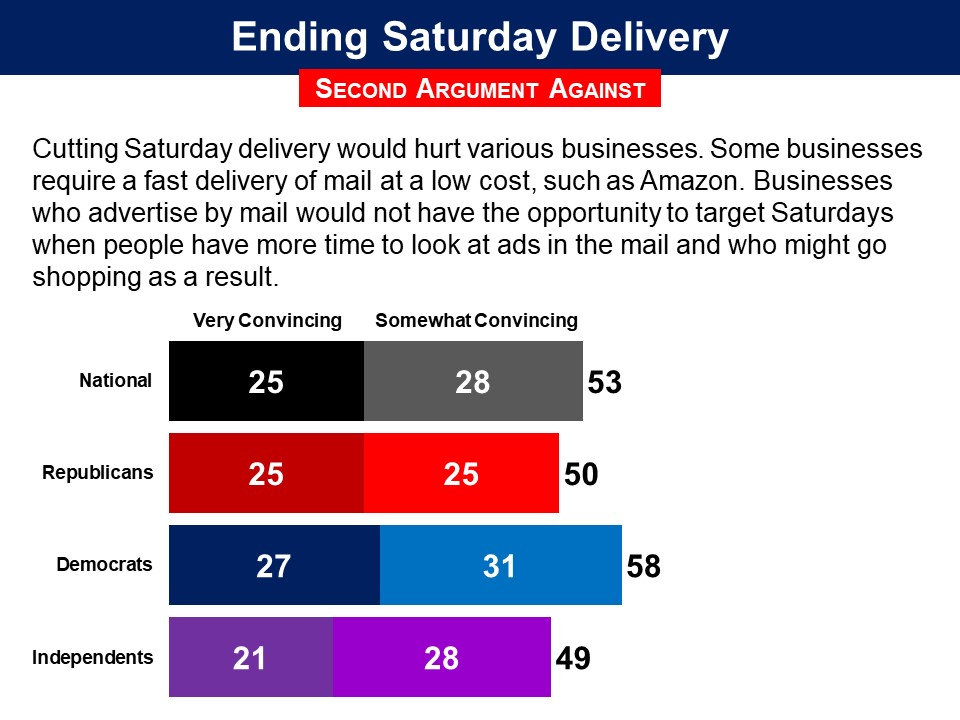 Respondents were then asked to rate how acceptable the following proposal would be on a 0-10 scale, with 5 being “just tolerable”:
Respondents were then asked to rate how acceptable the following proposal would be on a 0-10 scale, with 5 being “just tolerable”: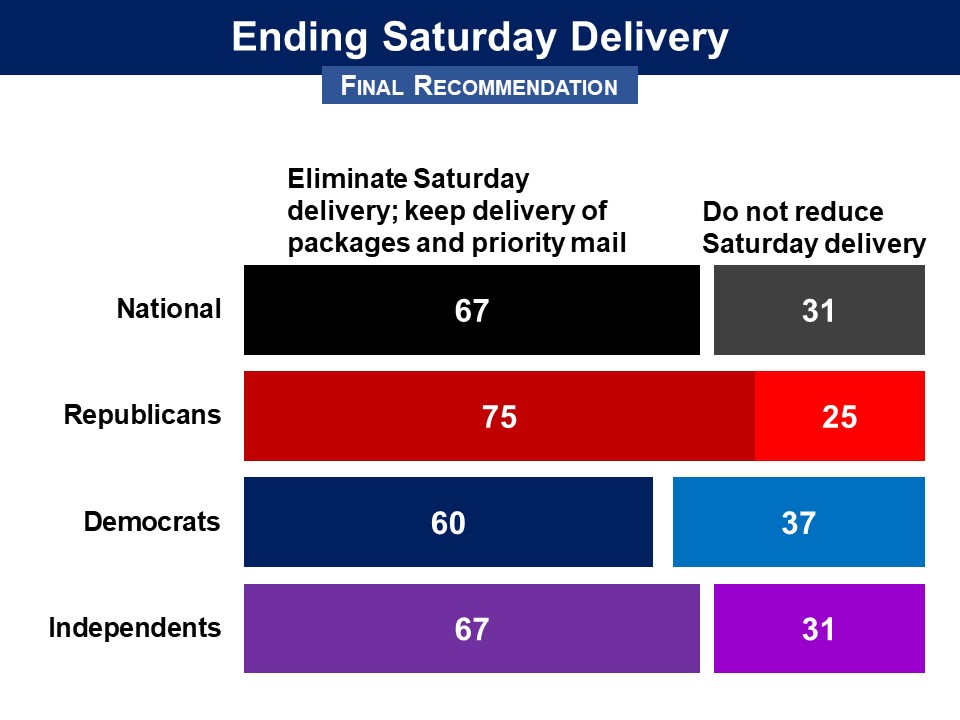 Response Without Undergoing Policymaking Simulation
Response Without Undergoing Policymaking Simulation


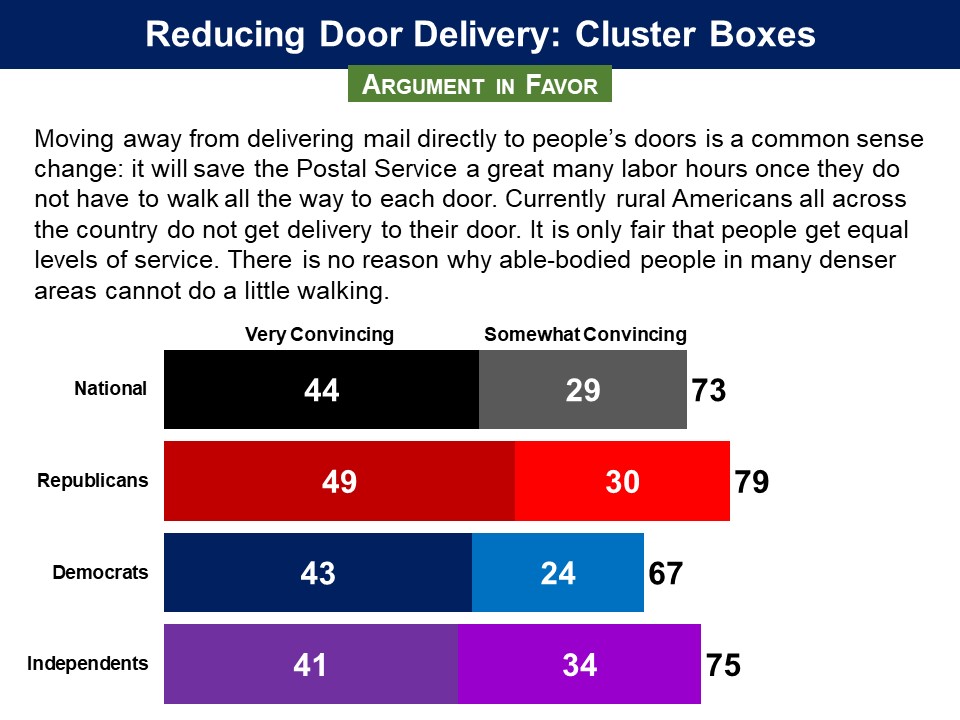
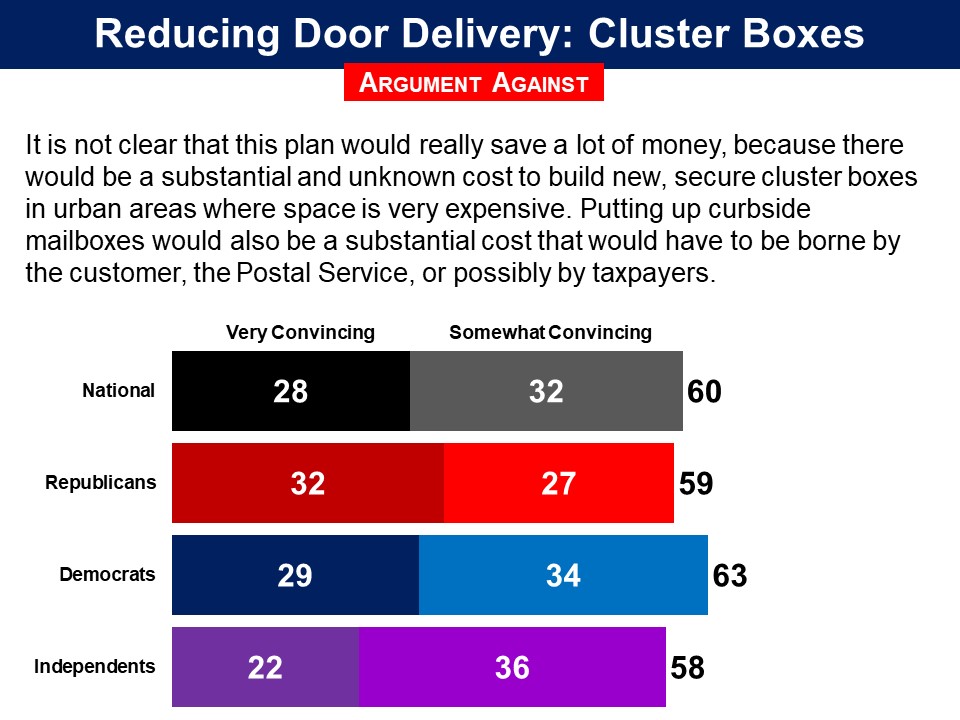 Respondents were asked how acceptable the following two proposals would be on a 0-10 scale, with 5 being “just tolerable.” The first went:
Respondents were asked how acceptable the following two proposals would be on a 0-10 scale, with 5 being “just tolerable.” The first went: 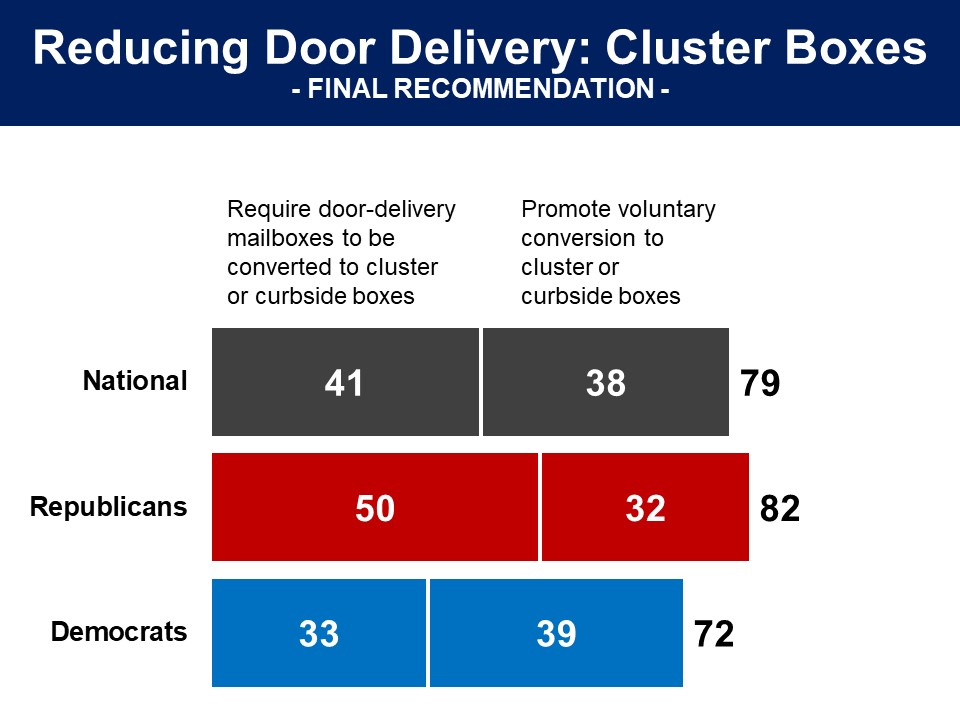 Status of Proposal
Status of Proposal

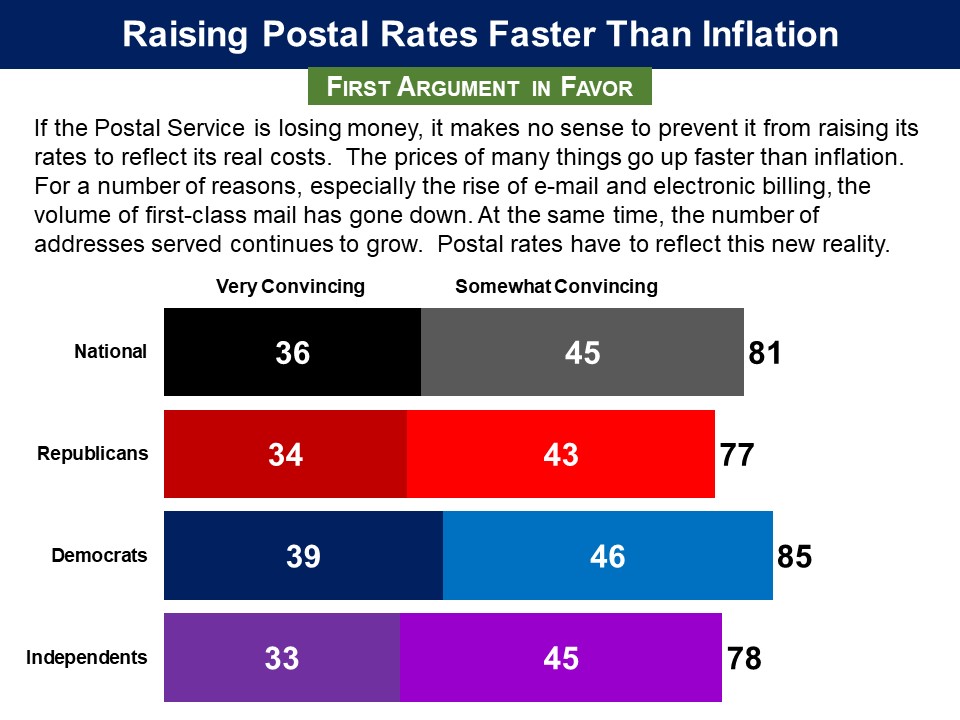
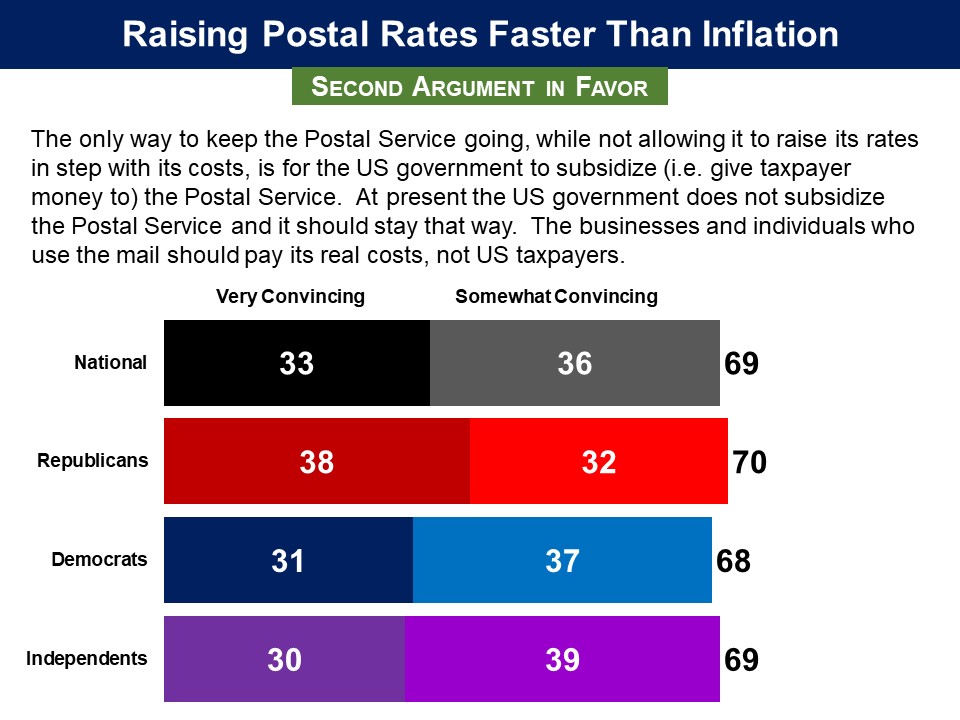 The first argument against was found convincing by 73%, including a similar share of Republicans and Democrats, but a larger majority of independents (78%). The second argument against was found convincing by just half.
The first argument against was found convincing by 73%, including a similar share of Republicans and Democrats, but a larger majority of independents (78%). The second argument against was found convincing by just half.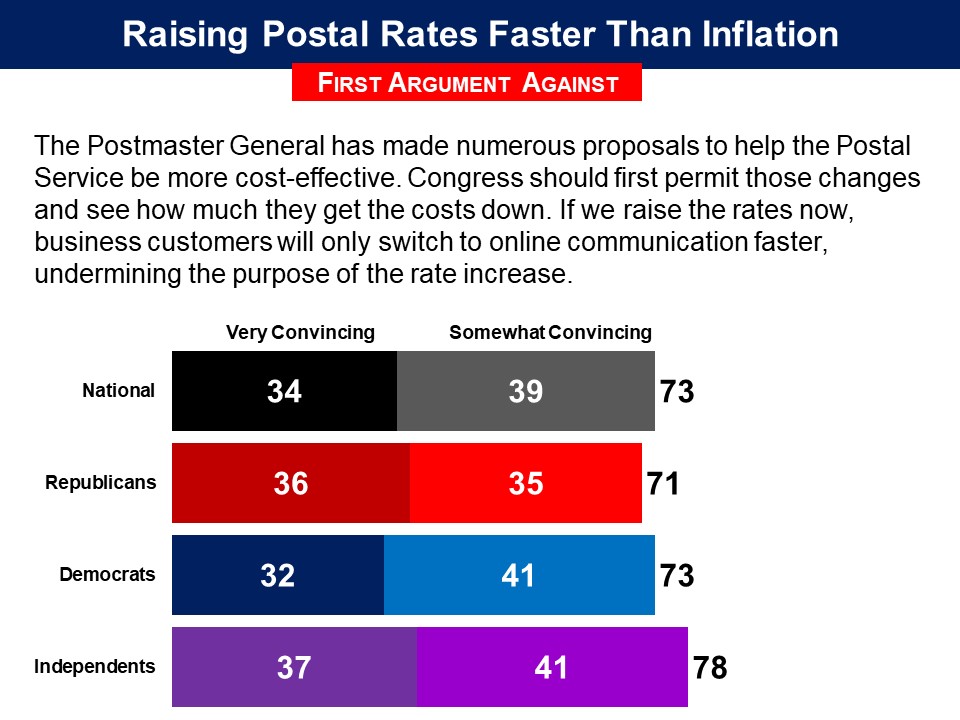
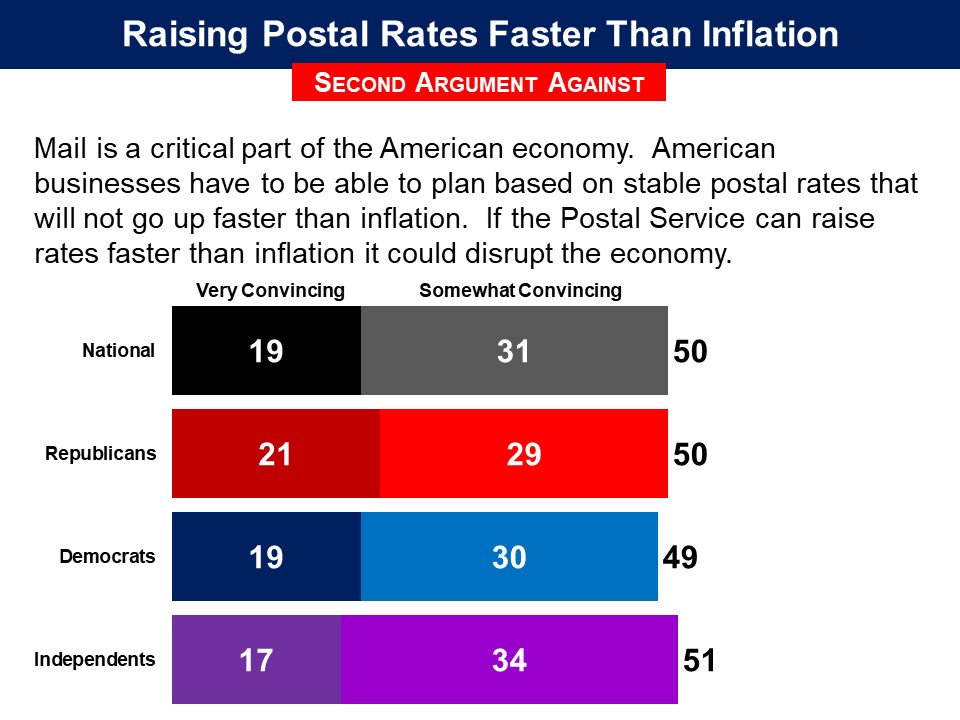 They were asked to rate how acceptable the following proposal would be on a 0-10 scale, with 5 being “just tolerable”:
They were asked to rate how acceptable the following proposal would be on a 0-10 scale, with 5 being “just tolerable”: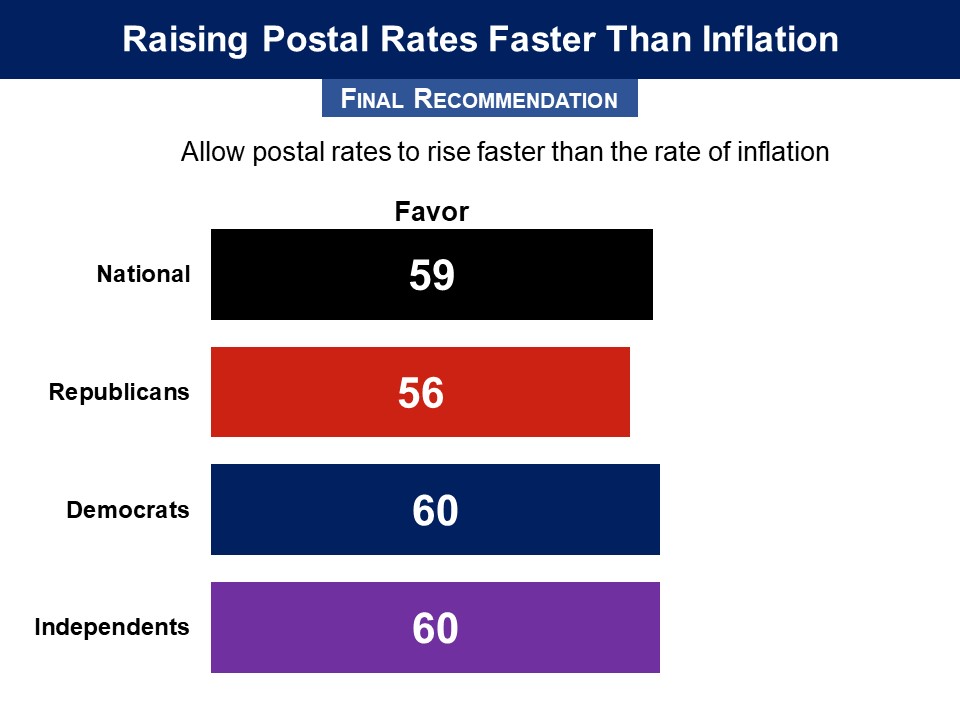 Response Without Undergoing Policymaking Simulation
Response Without Undergoing Policymaking Simulation

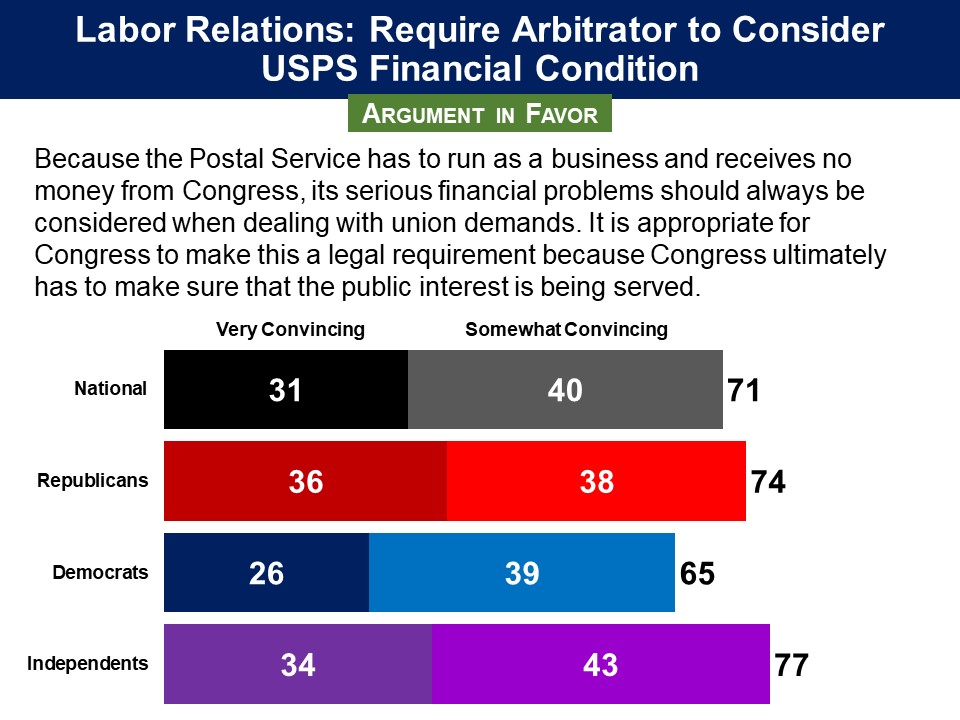
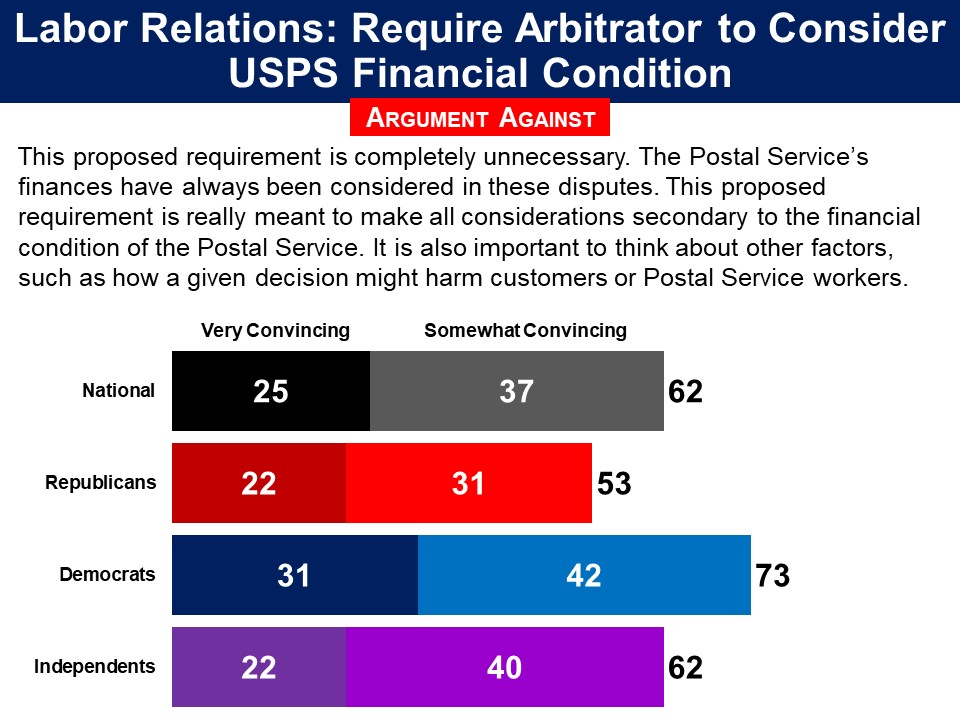 They were then asked how acceptable the proposal would be on a 0-10 scale, with 5 being “just tolerable.” A large majority of 69% found it acceptable (6-10), including 74% of Republicans and 63% of Democrats.
They were then asked how acceptable the proposal would be on a 0-10 scale, with 5 being “just tolerable.” A large majority of 69% found it acceptable (6-10), including 74% of Republicans and 63% of Democrats.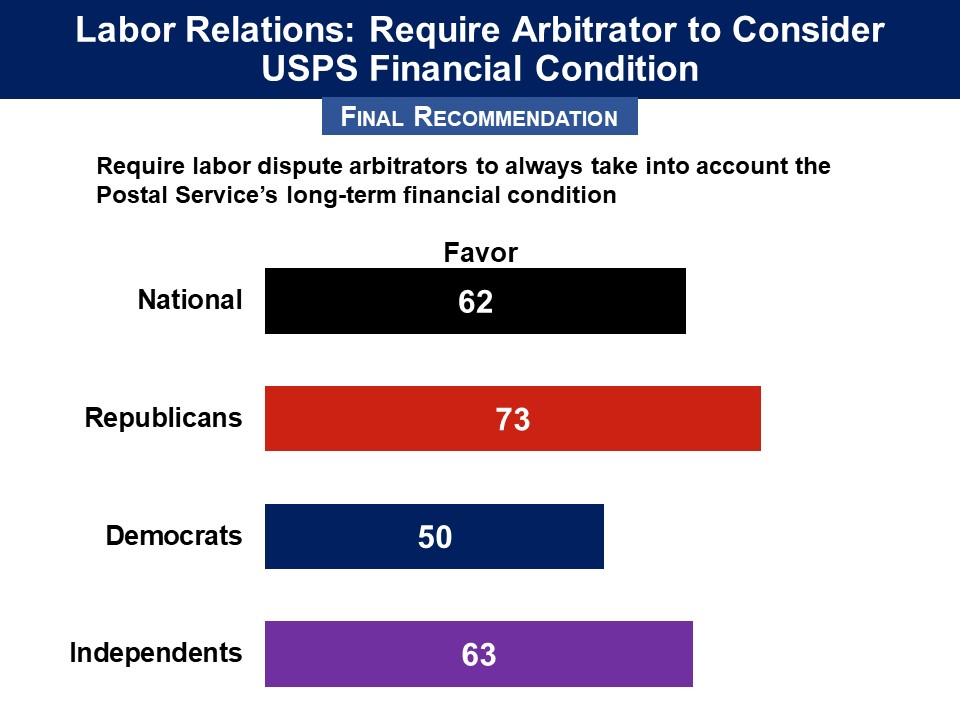 Status of Proposal
Status of Proposal